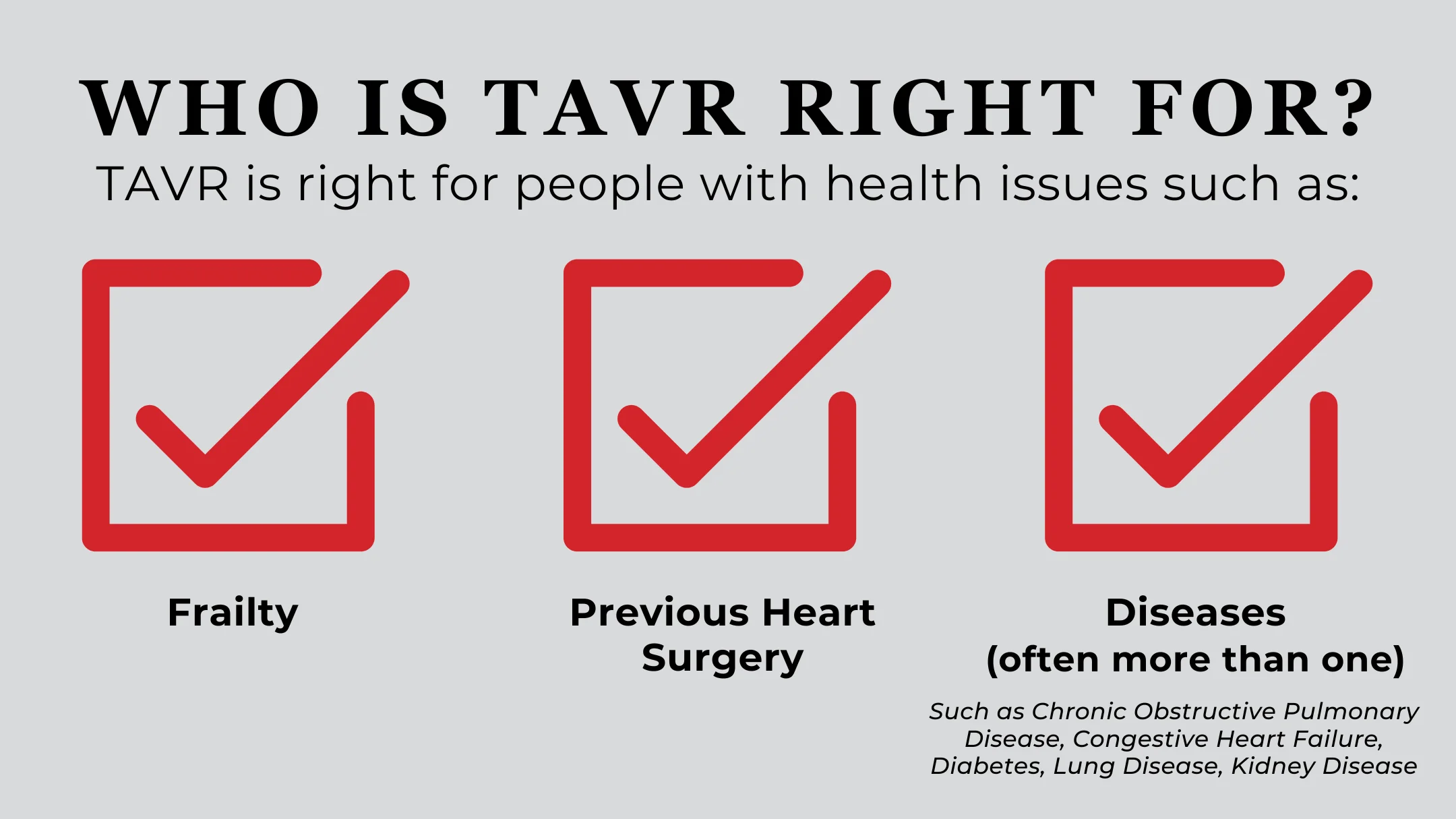Transcatheter Aortic Valve Replacement (TAVR)

A new treatment – transcatheter aortic valve replacement (TAVR) – is now available for people with aortic valve stenosis who can’t have surgery, the only other treatment for this condition. Aortic valve stenosis happens when the heart’s aortic valve narrows, blocking blood from flowing through the major artery leading out of the heart and throughout the body.
Shortness of breath and fatigue are the most common symptoms of aortic valve stenosis, which mostly affects people in their 70s and 80s. “Because the symptoms come on very slowly, patients usually just attribute it to aging,” says John Mehall, MD, medical director of cardiothoracic surgery at Penrose-St. Francis Health Services.
Anyone with shortness of breath that interferes with daily activities should see a cardiologist. Aortic valve stenosis also can become severe without any symptoms. Doctors often find it during a physical, when they hear an abnormal heart sound, called a heart murmur.
If left untreated, 50 percent of people with severe aortic stenosis and symptoms die within two years. Replacing the diseased valve is the only treatment. Until recently, patients who were too sick or high risk for open-heart or minimally invasive heart surgery couldn’t be treated. TAVR, available in southern Colorado only at Penrose Hospital, changes that.
TAVR is done by threading a long, flexible tube through an artery, usually in the groin, to the heart. The valve is squeezed into a balloon on the end of the catheter and once it’s inside the natural aortic valve, it’s inflated. This opens the valve and restores the blood flow.
